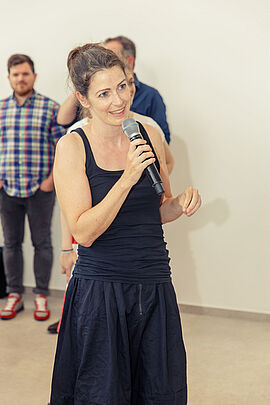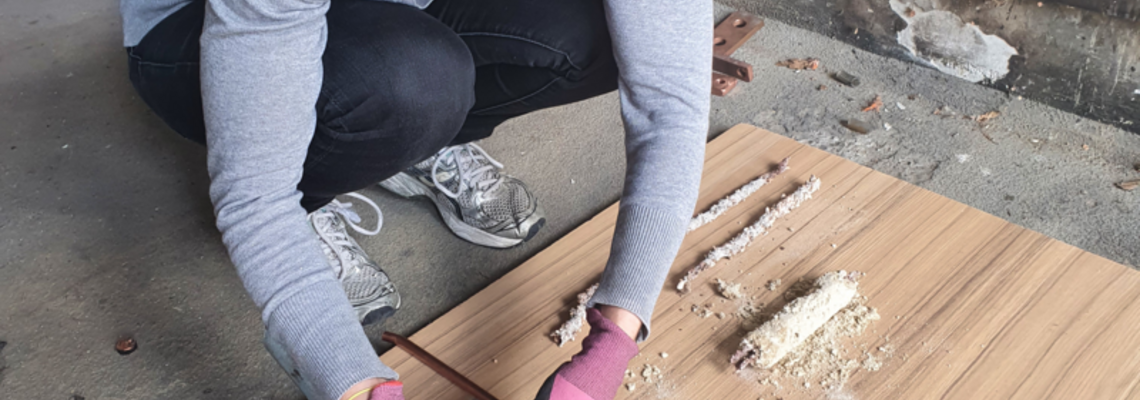Who is Judith Fegerl?
Judith Fegerl was born in Vienna in 1977. She studied at the University of Applied Arts Vienna (graduated 2004) and the Academy of Fine Arts Vienna (graduated 2006). Following intermediate stops in Berlin and New York, she has been living in Austria again for around ten years and works in one of the coveted Prater Ateliers of the federal government.
Her work focuses on the symbiotic connection between man and machine, body and technology, space and time. Her past exhibitions include shows at Galerie Hubert Winter in Vienna and Basel, at 21er Haus (Belvedere 21) Vienna, MAK Museum of Applied Arts Vienna, Lentos Linz, Zeppelin Museum Friedrichshafen, Moscow International Biennale for Young Art, and at the Austrian Cultural Forum New York and London. In 2019, Judith Fegerl received the Media Art Award of the City of Vienna.
Reservoir
From June 2019 to May 2020, Judith Fegerl's installation "reservoir" was on display in the foyer and consisted of two parts:
Part 1 – June 2019
For three months, twelve copper and twelve aluminium plates were placed in glass containers filled with salt water in the foyer of Giefinggasse 4. This experiment followed the working principle of the battery – energy was released and made visible on the metal plates.
Part 2 – September 2019
The copper and aluminium plates were removed from the saltwater bath, processed, and hung on the wall in pairs. The resulting structural changes in the material, which had very individual characteristics, were thus clearly recognisable and comparable. It showed how the energy generated in the glass boxes became clearly visible in the plates. A successful experiment!
Capture
Despite the Corona situation, Judith Fegerl took the next step for another exhibition at the AIT in July 2020. In the Center for Energy's high-voltage lab, she chased lightning bolts and arcs through various sand mixtures. Due to the great heat, the sand partially melted and solidified in jagged forms, so called fulgurites. Our artist did the same with old lightning rods – she activated them once again in the high-voltage laboratory by striking them with an artificial lightning strike. The fulgurites were then embedded in synthetic resin to solidify them. The exhibition is on display in the foyer of Giefinggasse 4.










